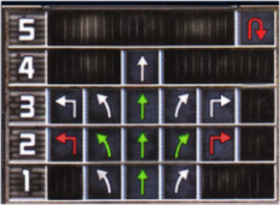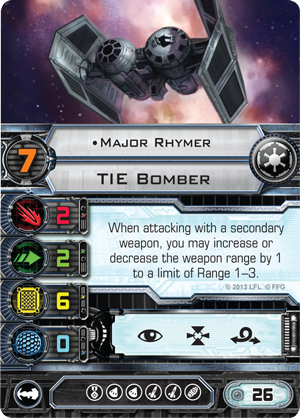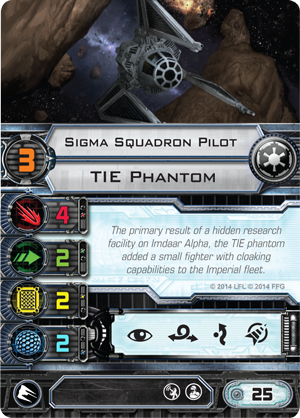Seeing as the last article triggered no less than 19 E-mails with questions and comments regarding ordinance I thought I would ride the momentum and write another one addressing one of the questions most of these e-mail more or less implied. Keeping in mind I’m no master or final authority on the topic, here goes nothing.
Question
Is there any ordinance that is a notch above the rest or better in some way? Something that might not be labeled as “useless” or “not worth it”?
Answer
In my personal opinion I actually think most ordinance is quite a big notch above primary weapons. I think the thing about ordinance is that you typically have to make an ordinance list and create synergy to gain the full value of ordinance and it’s in this element costs mount and you really have to weigh lists against the alternatives. You definitely can’t simply splash ordinance into a list in most cases. You are effectively creating a list built around a strategy driven by the type of ordinance you have selected. I have also noticed that many people miss-read and miss use ordinance, often skipping over a critical element of a piece of ordinance, something I have often been guilty of myself. I think perhaps a more specific breakdown could be helpful. My point however is that I don’t actually believe ordinance is bad, though I do agree that it requires a lot of scrutiny and there are quite a few limitations and “on the fence” points where you really have to consider value vs. alternative.
Torpedo’s
 Torpedo’s were effectively the first ordinance introduced into X-Wing in the original core set. Torpedoes typically require you to spend your target lock, so they put you in a position where you might be rolling dice without a focus token which is typically bad. It’s especially bad for one shot items that cost between 2 to 6 points. When it comes to torpedoes as ordinance you are pretty much always looking to create synergy effects to help ensure that when you shoot you get your points worth in damage caused. This is why early ships like Garven Dreis and Dutch Vander where such a great combo for using torpedoes. The question is are they worth it, well, yeah, I think they are.
Torpedo’s were effectively the first ordinance introduced into X-Wing in the original core set. Torpedoes typically require you to spend your target lock, so they put you in a position where you might be rolling dice without a focus token which is typically bad. It’s especially bad for one shot items that cost between 2 to 6 points. When it comes to torpedoes as ordinance you are pretty much always looking to create synergy effects to help ensure that when you shoot you get your points worth in damage caused. This is why early ships like Garven Dreis and Dutch Vander where such a great combo for using torpedoes. The question is are they worth it, well, yeah, I think they are.
In this synergy combo Dutch Vander target locks, which in turn gives Garven Dreis a target lock and vice versus Garven Dreis takes a focus action, so when he shoots his torpedo, spends his focus, he immediately gives it to Dutch Vander who in turn does the same thing (shoots torpedoes with focus). Effectively allowing you to Target Lock, shoot torpedos with a focus all in the same round for both ships. Both ships are 6 pilot skill which ensures you can use them interchangeably. A really great combo and example of how synergy combined with ordinance can be very effective. The problem? You have selected 50 points worth of ships around synergy designed for a single torpedo shot from each ship. Once you shoot it your left with a base X-Wing and base Y-Wing unless you dump more points into them. This is where great combos like this really lose their luster, it is a great combo but you have to question its value when compared to alternative ways to spend 50 points and the plethora of ways you can create synergy between ships.
A sound rule for creating synergy based on ordinance delivery is to ensure that the synergy continues after the ordinance has been spent.
That said I think the reputation of Ordinance being “not worth it” stems from Torpedos specifically because of the core mechanical problem with them. You must spend your target lock and they are one shot effects. Aside from the one shot thing unless you target lock one round and shoot the next, you will be doing it without a focus unless you find a combo like the one shown above to alleviate that issue. I agree that this is an issue with torpedoes specifically (not necessarily ordinance in general). It is valid to say that if you are going to shoot a torpedo without a focus, in most cases your better off shooting your primary weapon with a focus even if you are rolling less dice instead.
Let’s look at how some of these torpedoes can impact a match.
Proton Torpedoes for example allow you change 1 of your focus into a crit. While the crit is nice, when you roll 3 red dice with a focus using your primary weapon your odds are not really much improved by rolling 4 dice without one. This is typical of shooting ordinance without a focus. That said however you do flip one focus to a crit and most importantly you can shoot at range 3 without your opponent getting an extra agility with 4 dice. That is the benefit here and it’s a pretty big one because in the opening round of a match you will be at range 3 in almost all cases for at least one round on the approach. A couple of even moderate Proton Torpedo hits against an opposing fleet in the early stages of a match may be all you need to soften up your opponent and domino yourself into a victory. I do think it’s a bit pricey at 4 points, but If you use Proton Torpedoes make sure that by round 2 they have all been fired at range 3. This is there secret, 4 dice, range 3 no agility bonus for targets. If you do it with a focus, you are practically assured of some successful hits.
Advanced Proton Torpedoes are probably the trickiest if not most difficult ordinance to use in the game next to bombs, but they can be made to effectively guarantee 5 hits. You have to be at range one, you have to spend your target lock and the only benefit of its special effect is to flip blanks into focuses (3 of them), which, If you don’t have a focus makes the special ability useless. Now you do roll 5 dice which can be devastating. The assumption here is that you target lock on the approach and focus on the round you have someone in your sights at range one. With a focus you are 100% guaranteed 3 hits and extremely likely to get all 5. It’s not always an easy task to get into range one and get someone in your arc, especially for ships that can fire torpedoes since they tend to be less maneuverable and far easier to arch dodge. At 6 points it’s among the most expensive gear cards in the game as well.
Again this comes down to combos and building synergy is all about reducing or eliminating the core problem created by the base gear in the case of Advanced Torpedoes especially. In this case its arc dodging, easily solved by Nera Dantels for example who doesn’t cares about arcs when shooting ordinance. Another fine ship for shooting short range torpedoes is Major Rhymer, same cost, he increases your range to a 1 to 2 making it much easier in particular for the dial friendly Tie-Bomber. Just a couple of combination in which this little piece of ordinance can be used to greater effect.

We are back to the question is it worth it. Well I can say without hesitation that getting a 5 point hit on an opponent for 6 points is well worth it, always, especially if you choose your targets wisely. Since both ships have torpedo slots you can use Extra Munitions to turn 12 points of gear into 8 points of gear to potentially get two 5 dice shots. Not bad at all in my opinion.
Fletchette Torpedoes are also an interesting piece of gear because it’s so cheap and because its effect is guaranteed. Many people miss that there is no requirement to successfully hit to cause stress with Fletchette torpedoes, you simply need to fire it, so it guarantees that a ship with 4 hull or less will receive a stress as a result regardless if you get additional damage. If timed right this can be devastating and really Fletchette torpedoes are a reactive piece of equipment and one of the few that you can splash thanks to its low 2 point cost. You use it when the time is right, when giving your opponent a stress can cause critical problems. In X-Wing such opportunities happen quite frequently, in fact, it’s kind of a rare case when having a stress doesn’t cause you problems. For 2 points it’s a dirt cheap piece of gear to drop on rebel fleets in particular who have some many ships capable of firing torpedoes. I believe it to be one of the most cost effective torpedoes in the game when you understand how to leverage the impact a single unexpected stress can have on an opponent.
Now that’s not all of the torpedoes and perhaps I will do more articles talking about them in the future but suffice to say the reputation for ordinance being useless even when measured against Torpedoes is debatable at best. Missiles on the other hand, their reputation as useless is not deserved at all in my opinion. I will concede that missiles, like torpedoes require synergy and often very specific list building combos to be effective but missiles can be used to devastating effect and it doesn’t take much to make it so.
Missiles
The thing about missiles in my opinion is that almost every specific missile has a specific ship and in some cases, pilot that it’s really fantastic with. For the rest they may be so so or just plain bad, but that’s really the case with any equipment card. That might explain the reputation again here of ordinance being not worth it, but put the right missiles on the right ship and you can produce combos that are crazy game changers.
Cluster Missiles. The fact that you get to shoot twice in one round is already a substantial advantage to this equipment which I think is pretty good for almost every missile capable ship that mounts it. Cluster missiles however are fantastic on the Tie Bomber for several reasons.
Part of the reason is cost. 2 Cluster missiles with 1 extra munition on a low end (Scimitar Squadron) Tie-Bomber means that your Tie Bomber can potentially shoot 8 times in 4 rounds for a combined total price of 26 points. That is dirt cheap! Now grant it you have the “spend target lock” issue but there are a number of ways to address that from Squad Leader, Howlrunner or simply upgrading one of the ships to a Captain Jonas.
Proton Rockets. God I love the proton rockets. First and foremost you don’t need to target lock nor do you spend your target lock when using them which means when you shoot them you always shoot with at least a re-roll. Now there core ability is to increase their firepower when placed on high agility ships making it capable of getting it up to 5 dice. 5 dice if you can combo it to get a focus is … devastating even if you shoot it only once. Where do you put it?
The maneuverable and flexible A-Wings are the obvious and best choice, it goes without saying. It in particular works with an Airen Cracken with squad leader (great way to support ordinance ships in general). Perhaps less obvious is putting it on a Z-95. Sure you’re only up to 4 dice, but a bandit with proton rockets is 15 points. For all the complaints that ordinance is too expensive, that is dirt cheap and you can easily fit 4 Z’s in this fashion for 60 points and still have 40 points to play with.
On the Imperial side you really don’t have a good spot for them at the moment unfortunately. There is the Tie-Defender, which is already a bit too pricey in my opinion to mount missiles on it. The Tie-Advanced could do it, but it has the same issue as the defender, its already a bit pricey as is.
Tie Bombers can be fitted with them cheaply enough, but getting a Tie-Bomber into range 1 and in arc requires some doing and you may as well spend the extra points on a more powerful range one weapon if you are going to try it. In general though there is other ordinance that is fantastic for the Tie-Bomber for the same price.
The final one I will talk about is Homing Missiles. For 5 points you have a 2-3 range ordinance with 4 dice that does not require you to spend a target lock and prevents the use of evade tokens. This is a fantastic missile that works on almost every ship. One of the toughest things to do is to get a bead on high agility ships with evade and homing missiles are a great response. When you shoot a homing missile at range 3 you deny your opponent the bonus agility on top of everything.
Homing missiles have some really great synergy ships that they work particularly well on. Take for example the Z-95 combo of Airen Cracken with squad leader and 2 bandit pilots. You target lock with all 3 ships, then shoot with Airen Cracken in turn giving the other 2 ships 1 focus token each. Now you are shooting 3 Homing missiles, 1 with a target lock you can spend for re-rolls and the other 2 with focus and target lock re-rolls. That 12 dice with a high probability of hits and if you do this at range 3 you are not only denying evade tokens but the bonus for range to agility.
Grant it this is a 60 point combo but these ships continue to have great synergy after their ordinance is fired which is one of the rules you want to govern your ordinance/ship synergy selection.
Is it worth it. Well its debatable whether spending 60 points on Z-95’s is worth it, but if you get the hits early on this combo can really domino a match.
In conclusion. Well it’s hard to come to a conclusion. Ordinance is very expensive and being a one shot weapon requiring synergy to be effective even as a one shot weapon makes this the always questionable choice. There are a lot of great combo’s and lists one can build, it becomes tough to justify ordinance but in the same token I hope I have shown that its hardly “useless” as its often implied to be. There is a lot of potential to create complete havoc against your opponents with ordinance so unless you are an ultra-hardcore competitive player they are certainly viable. In competitive play I still agree with the general consensus that ordinance has yet to find a place in the meta, but in the same token the competitive meta excludes a great deal of things in X-Wing, excluding far more than it includes. To measure ordinance against competitive play is not really reasonable in your house games and it’s in house games the majority of X-Wing games take place.
I hope you found this article helpful and keep those questions coming, I’m always happy to have some fodder for more articles.






















You must be logged in to post a comment.